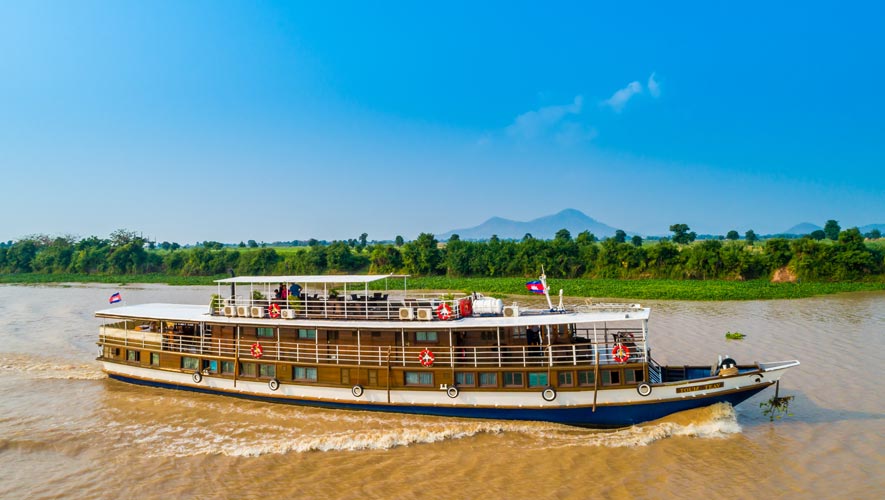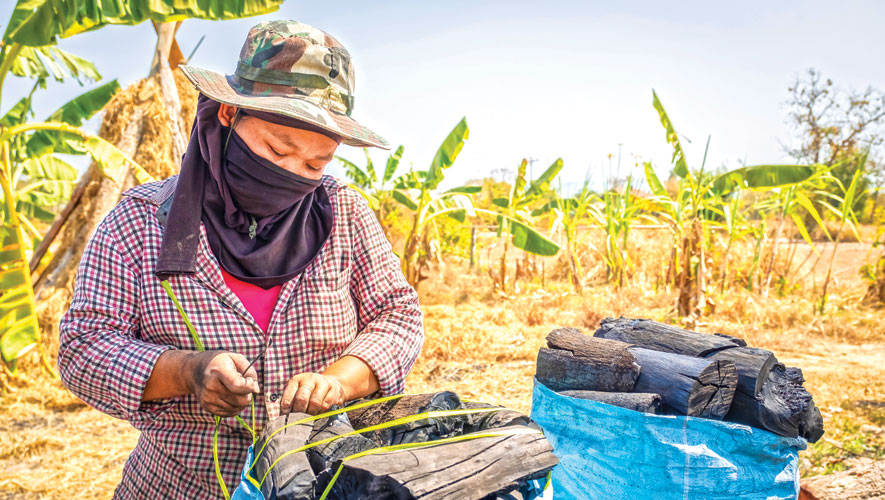While numbers show an increasing demand among tourists, the sector also faces challenges
For the latest Cambodian Business news, visit Khmer Times Business
The cruise market has long had a presence in the Mekong River and while the market’s development seems to be in its infancy, it has seen expansion over the years with additional players coming in and establishing a presence in the country.
The Sihanoukville Autonomous Port (SAP) for instance is seeing an increase of international tourist arrivals by cruise ships every year. News reports state that in the first four months of 2019, the port received 30 international tourism cruises, which was up by 57.89 percent compared with same period in the previous year.
The number of tourists went up to more than 29,000 this year, amounting to an increase of 78.25 percent.
While the sea cruise market seems to be seeing increasing figures, the river cruise market in its own right has been attracting attention among tourists arriving in the country as well.
Compagnie Fluviale du Mekong, one of the first Mekong river cruise companies, started in 2002 with a small 10-cabin vessel, called Toum Tiou, and only attracted a few hundred passengers a year.
“Since that time, we have seen a steady increase in passengers leading us to constructing our second, third and fourth vessels between 2007 and 2008,” says Naidah Yazdani, Asian director for CroisiEurope, Europe’s largest river cruise line.
He comments that the Mekong then saw exponential growth between 2009 and 2014, with other companies, many from a global background in river cruises, entering the market.
“However since then the market has settled down and there’s has been an increase of one or two ships per year. We ourselves added a fifth ship, Indochine 2, in 2017 as well,” Yazdani added.
Croisi Europe sees up to 5,000 passengers a year from various Western markets.
The Mekong will soon see an additional presence of a United Kingdom-based international cruise line, Emerald Waterways that will soon start operations in the Mekong River by the end of August and aims to ferry passengers between Cambodia and Vietnam.
The company will be the biggest cruise company to service the Mekong route.
One of its ships, Emerald Harmony, specially designed for the Mekong River, can accommodate up to 82 passengers in 42 state rooms and suites.
Challenges ahead
“With growing competition, right now the market is a little saturated and we are waiting for a second wave growth,” says Yazdani, who believes cruise prices may as services and infrastructure are developed.
He adds that a large increase in the number of ships has resulted in a shortage of infrastructure in both Vietnam and Cambodia to adequately cater to all the ships’ needs.
“[Water levels seem] to be lowering each year and now there is only a small window of dates in the calendar when the ships are able to reach Siem Reap,” Yazdani says, pointing it out as a matter of grave concern.
He claims that bus transfers sometimes have to be made on the final or first day of the cruise because the river has insufficient water.
Yazdani notes there is much competition because all the major companies that operate in the global river cruising market are offering a Mekong cruise.
Future of the river cruise
The recently appointed director of Phnom Penh Municipal Tourism Department, Mam Veasna, says the river cruise industry is a new addition to the tourism sector.
“It has been steadily attracting passengers with numbers increasing on a year-on-year basis,” he adds. He goes on to say the river cruise market has seen up to 40 companies have entered it after rising demand from tourists in recent years.
While it’s never going to be as big as the Danube or Rhine, Yazdani says outside the Europe, the Mekong holds quite the reputation now for cruise goers.
“It’s become one of those products that have to be in the brochure,” he says.
Yazdani foresees slower expansion because much depends on the water level, with the looming question of whether it will continue to decrease. He also points out that while there was a wave of demand between 2009 and 2014, it’s hard to predict if there is going to be a second wave.
“The Mekong seems well established in Western markets and I think if there is to be further expansion it would probably have to come from Asia,” he adds.




